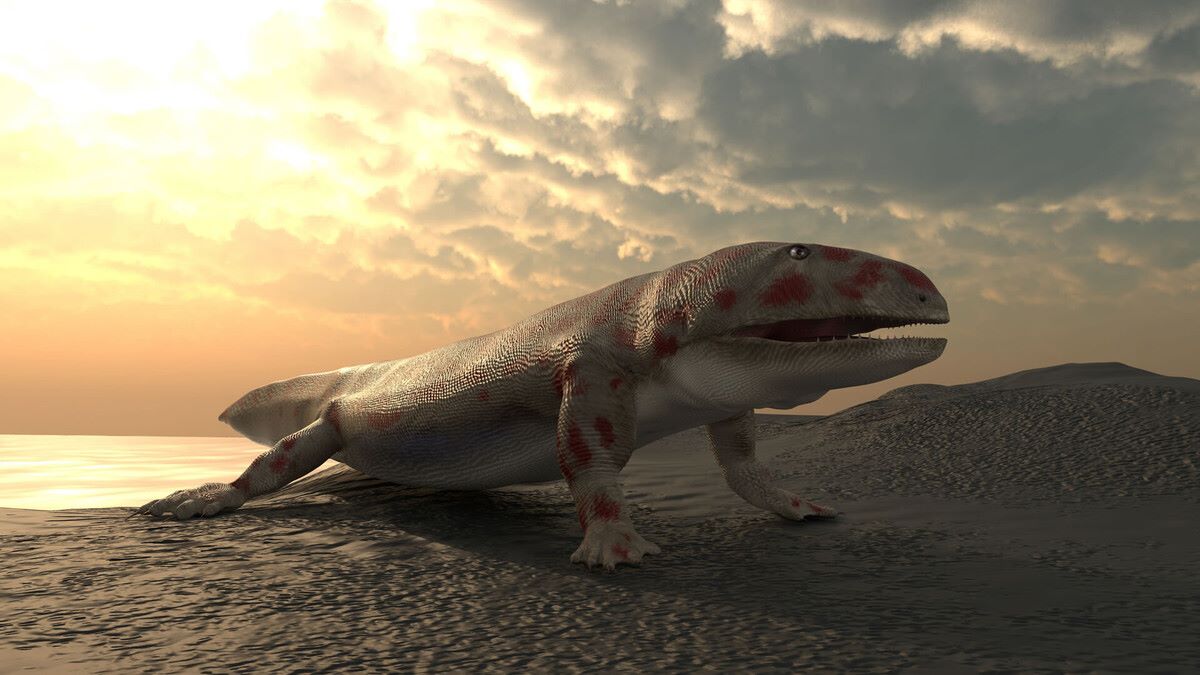
Are you a fan of epic Western movies? If so, you cannot miss the classic film “How the West Was Won.” Released in 1962, this movie has become an iconic piece of cinematic history, captivating audiences with its grandeur and compelling storyline. “How the West Was Won” takes viewers on a journey through the American frontier, as it follows the lives of multiple generations in their quest for progress, survival, and, of course, adventure. In this article, we will delve into 44 fascinating facts about this legendary film, shedding light on its production, cast, and impact on the Western genre. So, saddle up and get ready to explore the wild and untamed world of “How the West Was Won!
Key Takeaways:
- “How the West Was Won” is an epic Western movie with a star-studded cast, thrilling action sequences, and stunning cinematography that continues to captivate audiences over 50 years after its release.
- The film’s historical accuracy, innovative techniques, and cultural impact make it a timeless classic that celebrates the pioneering spirit and rugged beauty of the American West.
A Star-Studded Cast
The movie How the West Was Won boasts an impressive ensemble cast featuring legendary actors such as John Wayne, James Stewart, Henry Fonda, and Gregory Peck.
Epic Running Time
The film has a runtime of approximately 162 minutes, making it one of the longer movies of its time.
Spectacular Cinematography
How the West Was Won was filmed using the unique “Cinerama” widescreen process, which allowed for a breathtaking panoramic display of the Old West.
Three Directors
The movie was directed by three different directors: John Ford, Henry Hathaway, and George Marshall, each overseeing different segments of the story.
Captivating Storyline
How the West Was Won follows the journey of four generations of a family as they face the challenges and adventures of settling in the American West.
Award-Winning Success
The film was nominated for an impressive eight Academy Awards, winning three of them, including Best Writing, Best Film Editing, and Best Sound.
Authentic Set Design
The movie’s production team went to great lengths to recreate the look and feel of the Old West, using authentic costumes, props, and meticulously designed sets.
Musical Accompaniment
How the West Was Won features a memorable score composed by Alfred Newman, which perfectly captures the spirit of the frontier.
Action-Packed Sequences
The movie includes thrilling sequences such as a buffalo stampede, a train robbery, and a gripping shootout, adding excitement to the overall narrative.
Historical Accuracy
The filmmakers aimed to portray the historical elements of the time period as accurately as possible, incorporating real-life events and figures into the story.
Intertwined Storylines
The narrative of How the West Was Won follows multiple interconnected storylines, showcasing different aspects of life in the West.
Iconic Performances
John Wayne’s portrayal of a mountain man and Jimmy Stewart’s role as a frontier scout are among the standout performances in the movie.
Remarkable Stunts
The film includes impressive stunt work, including daring horseback riding, gunfights, and staged battles, adding authenticity to the action sequences.
Box Office Success
Upon its release, How the West Was Won was a commercial success, grossing over $50 million at the box office.
Critical Acclaim
The movie received positive reviews from critics, who praised its epic scale, memorable performances, and stunning cinematography.
Production Challenges
The production of the film faced various challenges, including adverse weather conditions during shooting and logistical difficulties in coordinating such a large-scale production.
Technological Advancements
How the West Was Won utilized advanced technology for its time, including the use of cinematic techniques to create seamless transitions between the three directors’ segments.
Cultural Impact
The film’s release had a significant impact on popular culture, sparking renewed interest in Western-themed movies during the 1960s.
Multiple Narrators
The movie features narration by several characters, providing different perspectives on the events unfolding on screen.
Reimagining History
While the movie takes inspiration from historical events and figures, it also blends fictional elements to create a compelling and entertaining story.
Set in Different Time Periods
How the West Was Won spans several decades, showcasing the changing landscape and challenges faced by settlers from the 1830s to the 1880s.
Recognition for Sound
The film’s innovative sound design garnered attention, earning it an Academy Award for Best Sound.
Memorable Quotes
How the West Was Won includes iconic quotes such as John Wayne’s famous line, “A man gets to thinking, and he can’t stop.”
Multi-Genre Approach
The movie combines elements of adventure, drama, romance, and action, appealing to a wide range of audiences.
Dedication to Authenticity
The filmmakers consulted with historians and experts to ensure the movie’s accuracy in depicting the lifestyles, costumes, and locations of the Old West.
Epic Scale Production
How the West Was Won required a large-scale production, with numerous sets, hundreds of extras, and extensive location shooting.
Influence on Western Cinema
The film’s success and innovative storytelling techniques influenced subsequent Western movies, leaving a lasting impact on the genre.
Nostalgic Appeal
How the West Was Won taps into a sense of nostalgia for the pioneering spirit and rugged beauty of the American West.
Detailed Costume Design
The movie’s wardrobe department meticulously crafted authentic costumes, capturing the fashion trends of the time period.
Expansion of the Frontier
The film explores the expansion of the American frontier and the challenges faced by settlers as they ventured into uncharted territories.
Symbolism and Metaphors
How the West Was Won incorporates symbolic elements and metaphors to explore themes such as the clash of civilizations and the pursuit of the American Dream.
Wide Audience Appeal
The movie’s compelling story, exceptional performances, and stunning visuals appealed to both Western enthusiasts and general moviegoers alike.
Legacy of Collaboration
How the West Was Won is known for its collaboration between multiple directors, screenwriters, and actors, resulting in a cohesive and memorable film.
Cultural Significance
The movie reflects the cultural and social changes happening during the 1960s, offering insights into the evolving perceptions of the Old West.
Special Effects Mastery
The film’s special effects team skillfully brought the Old West to life, recreating realistic landscapes, train sequences, and natural disasters.
Recognition for Editing
How the West Was Won earned an Academy Award for Best Film Editing, highlighting the seamless integration of its multiple storylines.
Historical Figures Portrayed
Throughout the movie, famous historical figures such as Abraham Lincoln and General Ulysses S. Grant make appearances, adding authenticity to the narrative.
Influence on Western Literature
How the West Was Won’s epic storytelling and portrayal of the American West also influenced Western literature, inspiring authors to delve into the genre.
Immersive Sound Experience
The film’s use of stereo sound enhanced the cinematic experience, immersing audiences in the vast landscapes and epic battles of the West.
Emotional Depth
How the West Was Won delves into complex emotional themes, exploring the struggles, sacrifices, and triumphs of its characters.
Pioneering Filmmaking Techniques
The movie introduced innovative techniques such as split screens and overlapping dialogue, pushing the boundaries of traditional filmmaking.
Portrayal of Native Americans
How the West Was Won strives to present a balanced and nuanced portrayal of Native American tribes, acknowledging their contributions and struggles.
Documenting American History
Through its fictionalized depiction of historical events, the film serves as a time capsule, preserving the memory of America’s westward expansion.
Lasting Cultural Relevance
Over half a century since its release, How the West Was Won continues to captivate audiences with its timeless storytelling, breathtaking visuals, and memorable performances.
In conclusion, the movie How the West Was Won remains a monumental achievement in cinema, offering a grand and immersive experience that celebrates the spirit of the American West. With its star-studded cast, epic storyline, and visually stunning cinematography, it has become a defining film in the Western genre. Whether it’s the memorable characters or the breathtaking landscapes, How the West Was Won continues to enthrall audiences and will forever be remembered as a classic piece of filmmaking.
Conclusion
How the West Was Won is a classic Western film that has captivated audiences for decades. With its epic storyline, incredible cast, and stunning cinematography, it showcases the untamed and rugged beauty of the American West. From the pioneering spirit to the challenges faced by settlers, the film allows viewers to immerse themselves in the struggles and triumphs of those who ventured into the unknown.
Whether you’re a fan of Westerns or simply enjoy a good adventure, How the West Was Won is a must-watch movie that continues to leave a lasting impact on its audience. Its portrayal of the West serves as a reminder of the indomitable spirit of the individuals who shaped the landscape and laid the foundations for modern America.
FAQs
1. Who directed How the West Was Won?
How the West Was Won was directed by three directors: John Ford, Henry Hathaway, and George Marshall.
2. When was the movie released?
The film was released in 1962.
3. What is the runtime of How the West Was Won?
The film has a runtime of 2 hours and 44 minutes.
4. Who are the main stars of the movie?
The film features a star-studded cast including James Stewart, John Wayne, Henry Fonda, Gregory Peck, and Debbie Reynolds, among others.
5. Is How the West Was Won based on a true story?
No, the film is not based on a true story, but it portrays the historical context and the challenges faced by settlers in the American West.
6. Did the movie receive any awards?
Yes, How the West Was Won won three Academy Awards for Best Film Editing, Best Sound, and Best Writing, Story and Screenplay.
7. Is How the West Was Won available to stream or purchase online?
Yes, the movie is available on various streaming platforms and can be purchased on DVD or Blu-ray.
Was this page helpful?
Our commitment to delivering trustworthy and engaging content is at the heart of what we do. Each fact on our site is contributed by real users like you, bringing a wealth of diverse insights and information. To ensure the highest standards of accuracy and reliability, our dedicated editors meticulously review each submission. This process guarantees that the facts we share are not only fascinating but also credible. Trust in our commitment to quality and authenticity as you explore and learn with us.


